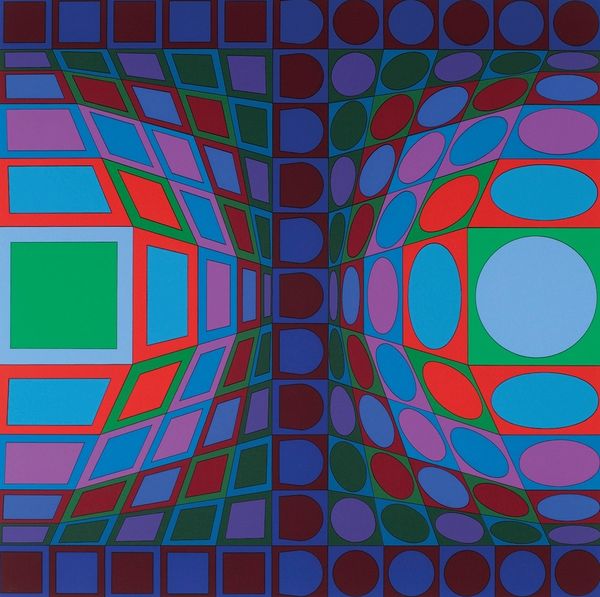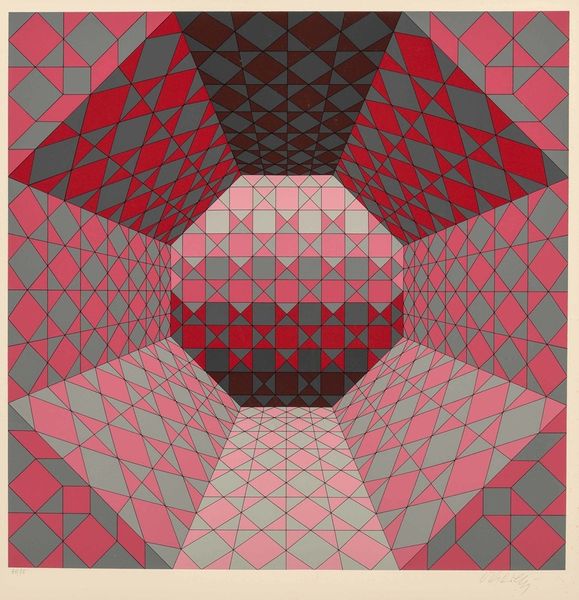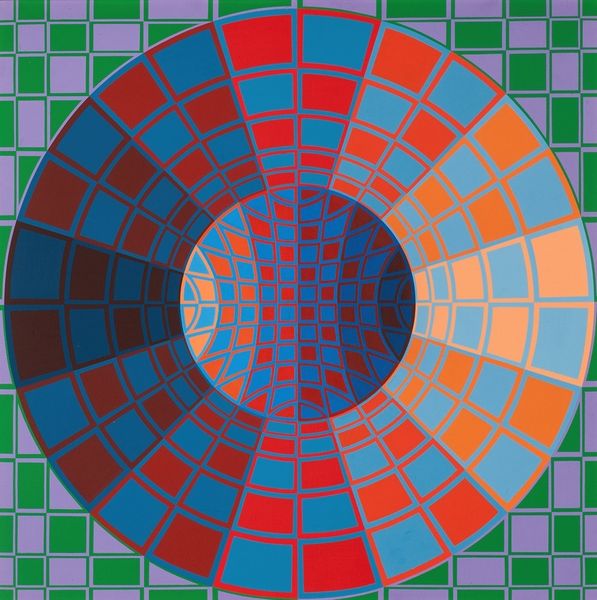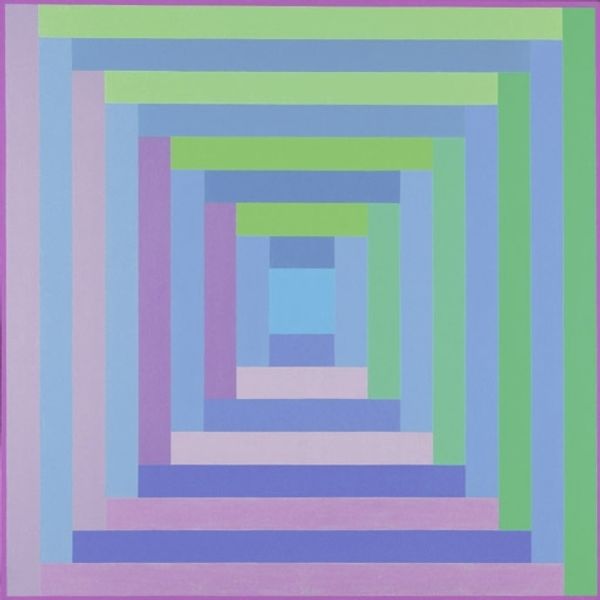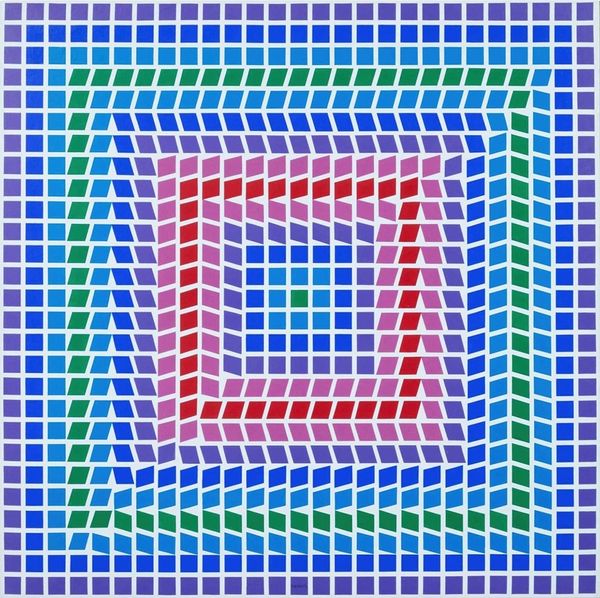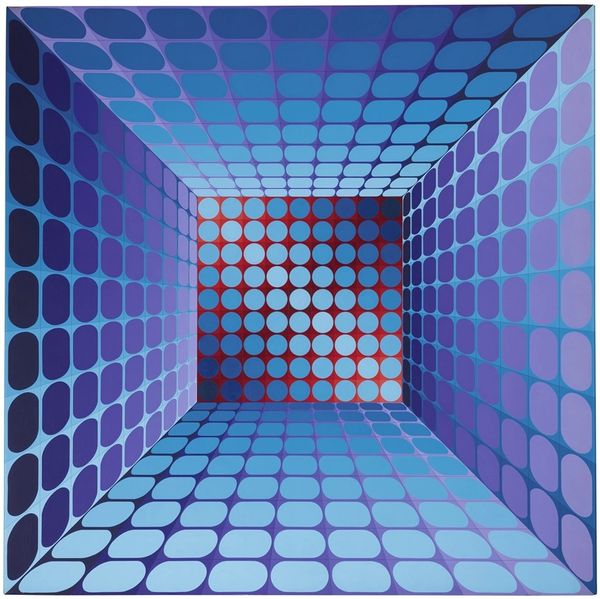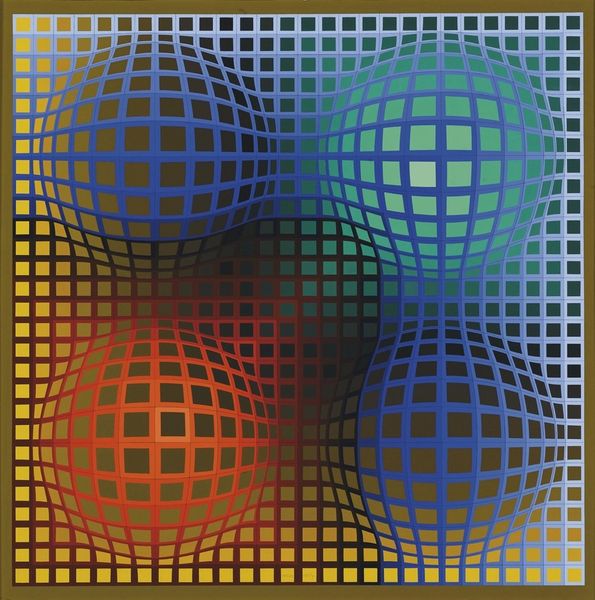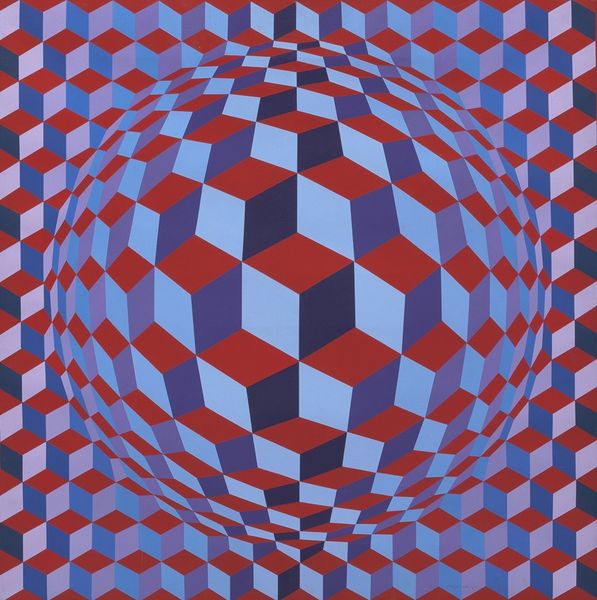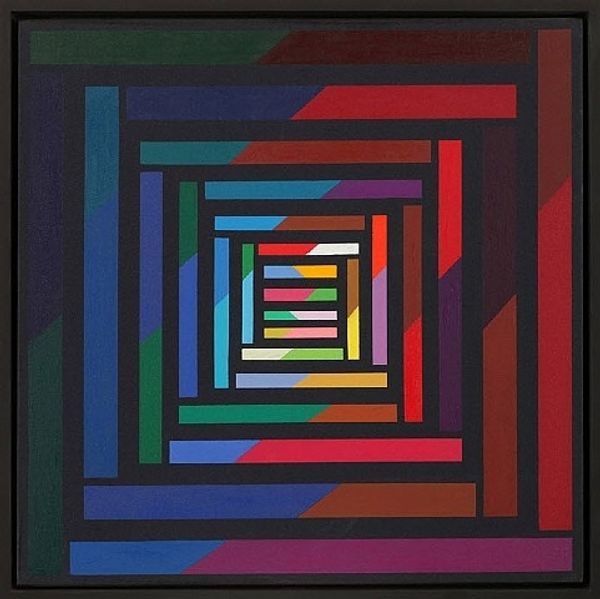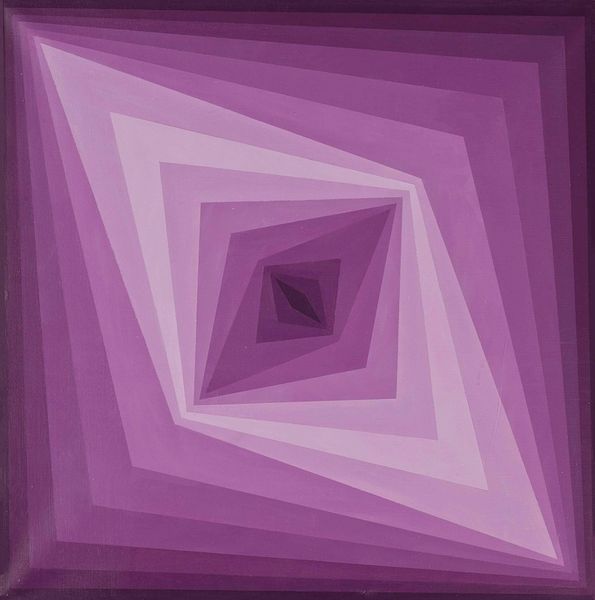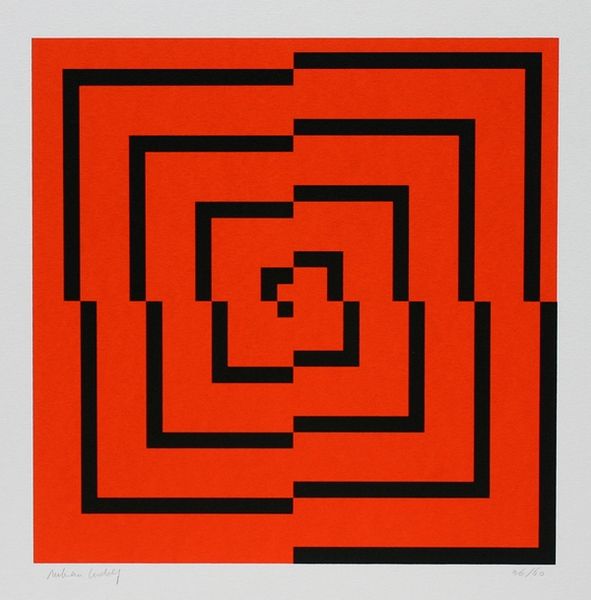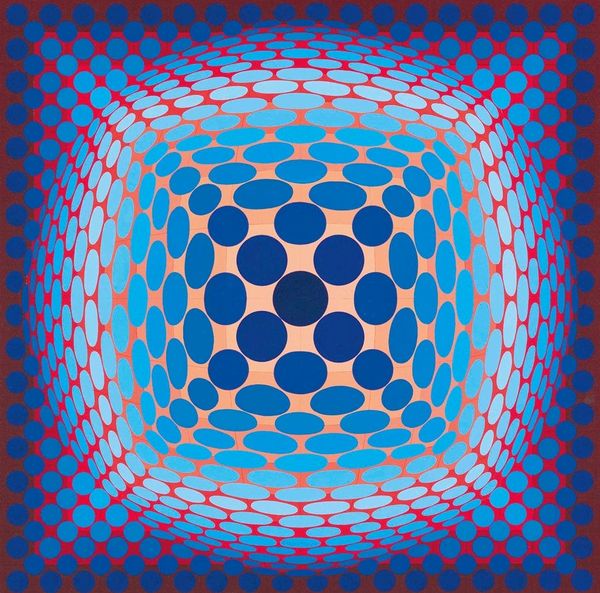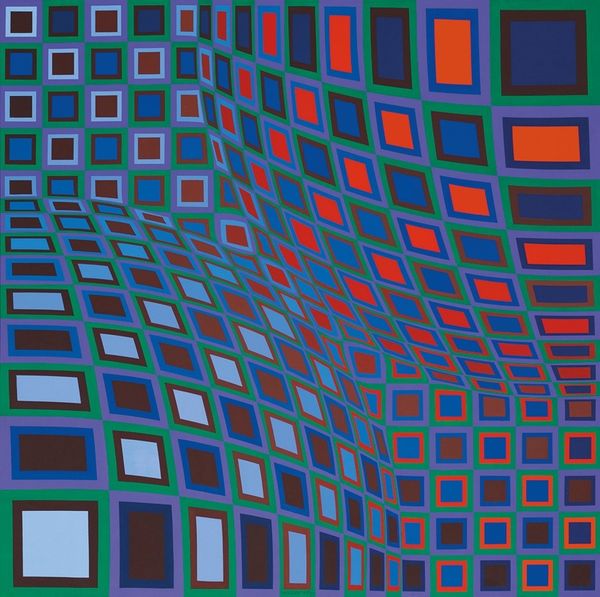
graphic-art, print
#
tiling design
#
graphic-art
#
natural stone pattern
#
op-art
# print
#
abstract
#
geometric pattern
#
subtle pattern
#
abstract pattern
#
organic pattern
#
geometric
#
repetition of pattern
#
vertical pattern
#
abstraction
#
pattern repetition
#
layered pattern
Copyright: Modern Artists: Artvee
Curator: Victor Vasarely, a leading figure in the Op Art movement, created "Kaldor" in 1980. It’s a print, and what strikes me immediately is the use of vibrant colours in creating a spatial illusion. Editor: Yes, it’s visually arresting. My first thought is that the work plays with architectural space, or rather a deliberately impossible version of it. The tiling is suggestive of labor-intensive building techniques that, in reality, might never achieve these impossible contortions. Curator: Absolutely. Op Art, as a style, really gained traction during the 1960s, reflecting a period of intense social and political change. Think about the rise of consumer culture and how artists responded by playing with perception and creating experiences that challenged viewers. Editor: Interesting that you mention consumer culture because that connects strongly to the means of production. This looks like it could have been produced in larger runs which then, ironically, democratizes a design object like this. Curator: I agree, there's an interesting contradiction. But it also fits the spirit of the era: experimenting with how people interact with art and environments in an era that valorized art movements tied to social values like pop art. The work situates itself within questions around industrial design and reproducibility, while creating these incredible illusions of volume and depth. The sphere on the back wall seems both recessed and pushing forward! Editor: Exactly, it disrupts traditional notions of artistic skill by emphasizing industrial process and questioning art's uniqueness. Consider the screen printing needed. There is labor involved in those materials that often gets obscured. Curator: What strikes me is the sense of play with the ideas of postmodernism; is there meaning in this work other than its existence as pure play of shapes? Are there social commentaries in its visual trickery? Editor: I think that you bring up a key aspect of conceptual art when you ask about play. Is Vasarely highlighting a new kind of labor within design? Curator: So, considering all this, how does "Kaldor" sit within Vasarely's larger body of work and Op Art in general? Editor: "Kaldor," for me, emphasizes a breakdown of art historical hierarchy, offering new interpretations about craft and challenging material realities. Curator: For me, "Kaldor" stands as a vibrant reflection of a transformative period, a time of shifting cultural values and an exploration of new ways of seeing and experiencing the world.
Comments
No comments
Be the first to comment and join the conversation on the ultimate creative platform.

